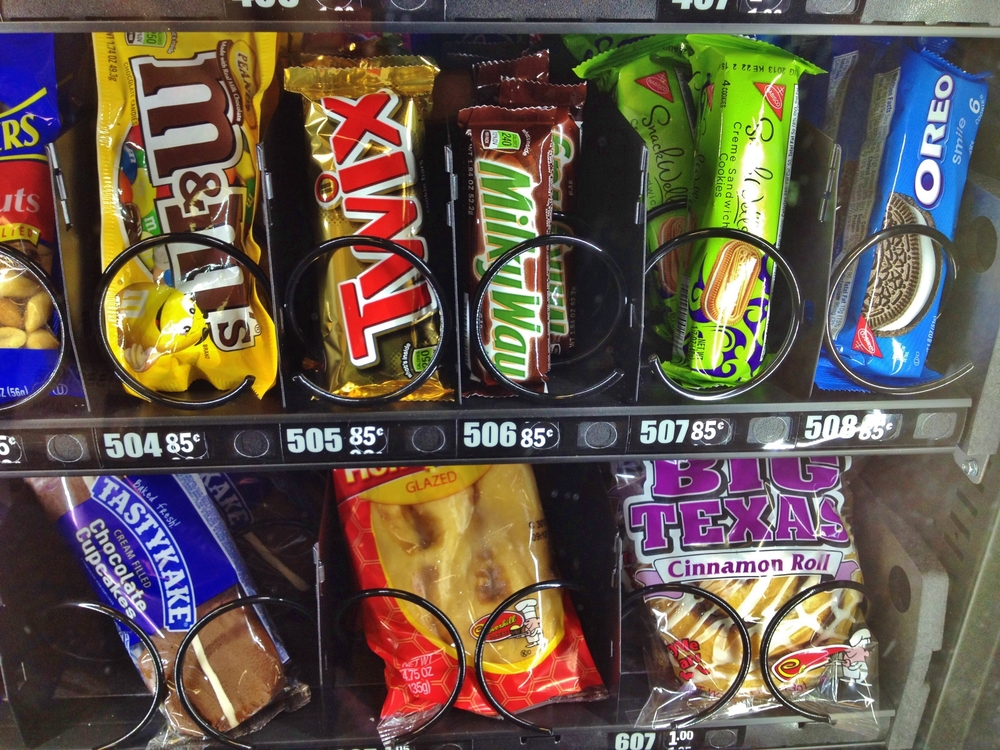Let’s call him Tim.
With a sour face, Tim arrives at the nurse’s office in the elementary school and silently walks to the cabinet for the gummies that will raise his blood sugar before collapsing on the bed. He flips his continuous glucose monitor towards me so that I can record his blood sugar of 65 in a gesture that says, “See, it happened again…I hate this.” Tim grimaces. For the second day in a row, he’ll miss his math lesson.
Later that same day, I run to Tim’s bus with a glass of water because his blood sugar has soared above 300. He hates this diabetic rollercoaster, this lack of control, this interruption of a normal life, and the stigma of being different.
After work, I arrive at the community health center for my annual wellness checkup. As I enter the waiting area, I’m dumbfounded. The community health center has installed a soda machine and a junk food machine filled with processed food that doctors and nurses tell children not to eat. I try to control my fury and am directed to leave a comment card.
My comment: “Is business down? Do you need patients so badly that you’re helping make people sick? This is downright unethical to put these machines in a community health waiting room.”
When I mention this to the nurse practitioner, she responds, “I can’t do anything about that.”
Finally, after days of phone calls, I receive an email saying that administration agreed to “move the machines to the employee area.” The manager hopes I’m “happy with this decision.” I’m not. They should return their federal funding.
Do the administrators of a community health center not understand that their staff live in the community? The banner at the entry way says, “We care for you.” No, this is not caring. This is not community health. And this is not an isolated event.
A week later, a nurse calls me from Texas. She accompanied her boyfriend for his cardiac procedure and was appalled at all the junk food machines in the waiting area. How did this become normal?
Diabetes affects 38.4 million people. Weight loss profits exceed $6 billion annually while obesity costs our healthcare system $480 million. Companies make lucrative profits pushing the extra 500 calories per day from processed foods. And now you can get these empty calories at your doctor’s office! I had been under the illusion that my primary care provider’s office really did have my best interests at heart, but now I realize that no place is safe from corrupted vested interests.
I imagine Tim waiting for his doctor’s appointment and eyeing the vending machines, of toddlers begging their mothers for this candy, and my obese students craving these unhealthy calories.
What happened to “First do no harm”? If you see this practice, say something. Offering junk food in any healthcare setting is a betrayal of our patient’s trust.


All of her books come from her passion to understand the stories of nurses. Her books, “Ending Nurse to Nurse Hostility” and “Speak Your Truth” illuminate our relationships with our peers and physician partners. She is also co-author of “The Dauntless Nurse” which was written as a communication confidence builder.
Kathleen is also a guest Op Ed writer to the Seattle Times and has been interviewed twice on NPR’s “People’s Pharmacy”. Her Tedx Talk calls for changing our belief system from a hierarchy to equality in order to keep our patients safe – and also explains how disaster thrust her into ‘the best profession ever’.
You can also find more information about Kathleen on her website, Twitter, and Facebook.
References
Centers for Disease Control and Prevention. National diabetes statistics report. November 29, 2023. cdc.gov/diabetes/data/statistics-report/index.html
Rowley WR, Bezold C, Arikan Y, Byrne E, Krohe S. Diabetes 2030: Insights from yesterday, today, and future trends. Popul Health Manag. 2017;20(1):6-12. ncbi.nlm.nih.gov/pmc/articles/PMC5278808
Waters H, Graf M. America’s obesity crisis: The health and economic costs of excess weight. Milken Institute. October 26, 2018. milkeninstitute.org/report/americas-obesity-crisis-health-and-economic-costs-excess-weight


















